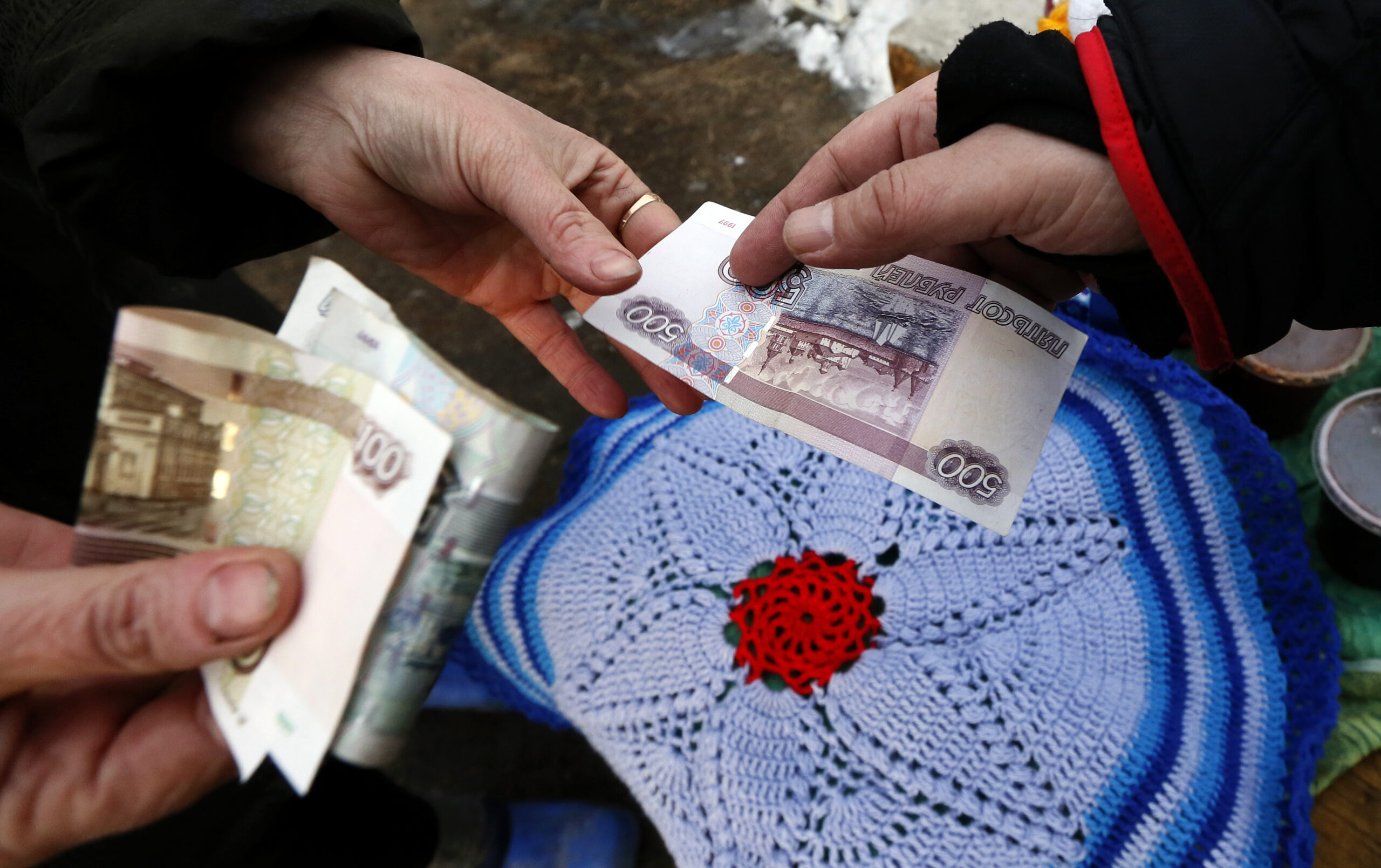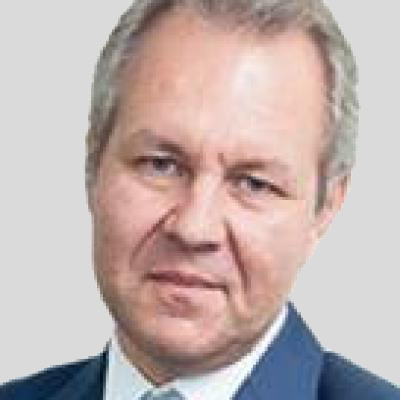When Putin suggested three months ago that «we should consider approaches towards the modernisation of our fiscal system and towards a more fair distribution of the tax burden looking at those who earn higher personal and corporate incomes,» few people had any doubts that the issue at hand was not only about redistributing the tax burden, but also about increasing it, especially since the president added: «it is absolutely necessary to close all sorts of loopholes that are used by some companies to avoid taxes or understate their tax dues.» Almost immediately after Putin’s speech, the outline of the ‘reform’ was presented: the introduction of a progressive income tax scale (PIT) and a one-off increase in the tax on profit from 20% to 25%. On this basis, experts suggested that it would bring approximately 2.5 trillion roubles a year to the federal budget.
The ‘fine-tuned’ parameters of this new idea, announced at the end of May, suggest that the reform looks somewhat more serious in scale and will affect virtually all business entities, not just «the ones with higher incomes.» The income tax scale becomes progressive and flexible: it will remain unchanged for the vast majority of citizens with a monthly income of up to 200,000 roubles (and even dropping to 7% for low-income families with many children), but will increase from 13% to 15% for monthly incomes of 200,000−416,000 roubles, to 18% for monthly incomes of 417,000 to 1.66 million roubles, to 20% for incomes of 1.67−4.17 million roubles, and to 22% for incomes above the latter threshold. However, the tax on profit will be raised to 25% from the current 20% for all commercial companies regardless of size. In addition, VAT will be refunded for small businesses with annual income starting from 60 million roubles, and the threshold for the simplified taxation system will be raised from 265 million to 400 million roubles. The mineral extraction tax rate for producers of iron ore, phosphate and potash fertilisers will be elevated 2.5 times from the current level of 15%. To complete the picture, taxes on the sale of real estate will also go up. As a result, as could have been expected, the goal of the tax increase clearly prevails over the idea of diversifying taxation and shifting the ‘centre of gravity’ to the more affluent taxpayers.
The Ministry of Finance, which allegedly took the postulates of State Duma deputies into account while developing all these proposals, estimated the gain for the country’s budget at an incredible 17 trillion roubles, specifying that this figure was calculated on the assumption that the rates which will become applicable from 2025 onwards will remain unchanged throughout Putin’s next presidential term and promising that no further changes to tax legislation will be made in the coming years.
Naturally, the main question that was picked up in discussions from the moment when Putin first announced the tax increase was whether the goal was realistic, whether the increased taxes could be successfully collected and whether they would help to fulfil the main task of Putin’s fifth term, i.e. maintaining economic stability in the country under conditions of the never-ending ‘special operation’. Although the opinions on this issue have been quite polarised within the expert community, I would venture to say that this issue is unproblematic.
There is no particular reason to doubt the feasibility of the reform. The bulk of the additional revenues (two thirds, to be precise) will originate from the increased tax on profit: entrepreneurs will pay this money (1.6 trillion roubles in 2025) without much hesitation. Against the backdrop of Russia’s turn towards a war economy, business profits have grown noticeably. In 2018−2019, the balanced financial result (profit less loss) of organisations (except for small businesses, banks, insurance organisations and government institutions) averaged 14.6 trillion roubles, but it more than doubled in 2023 compared to pre-pandemic times, reaching 33.3 trillion roubles. As a percentage of GDP, this figure (which does not include, for example, the banking sector’s record profit of 3.3 trillion roubles) is almost twice as high as the corresponding figure in the United States (19.6% in Russia versus 10.4% in the USA). This is why the tax increase looks more like a belated measure than something that could cause any problems. The increased personal income tax—which could, hypothetically, trigger social discontent—will bring less than 20% of the tax increase, and the increase itself will affect only 3−4% of Russians since the lower threshold of the tax adjustment exercise is set at a very high level, i.e. 200,000 roubles per month (based on last year’s statistics, average salaries of this level were not recorded even in Moscow). Considering that Russians are not too fond of wealthy citizens, this measure will not provoke any protests either, and speculations about a serious scale of tax avoidance are doubtful: unlike in the 1990s, the government has now established good control measures over financial flows, and citizens have eagerly embraced mortgages and consumer loans, which means that their income must be kept fairly transparent (of course, these low estimated numbers of people who will be affected by the tax reform are rather misleading since the reform will also affect the owners of small businesses and real property, but the authorities understand all too well that radicalism is not a good idea, which is why they decided against raising taxes for self-employed citizens and sole traders).
The Russian economy—at least as it stands now—will hardly notice Putin’s next ‘tax manoeuvre’. The budget, however, is a somewhat more complicated issue, with many contenders eager to receive additional revenues. On the one hand, of course, this group includes the army, which will need ever more money for arms production and salaries to military personnel. On the other hand, there are various recipients of social welfare benefits who rely on Putin’s promises to ensure a sharp and radical increase in their income (the minimum wage alone will climb more than 2.1 times by 2030). Estimates made in early March based on ‘fresh footprints’ assessed the scale of the Kremlin’s new promises at 1.8−2 trillion roubles a year, although the main spending will likely be shifted to the second half of Putin’s term. This means that the size of the budget deficit, which is likely to shrink already in 2024 from an average of more than 3 trillion roubles for 2022−2023 to about one trillion roubles and will be reduced to zero in 2025, will inevitably increase again in subsequent periods.
Therefore, the decisions that have been taken as well as the proposed version of the tax reform should be viewed as evidence of an attempt to rethink the most important economic dogma of Putinism, i.e. the aspiration to ‘live within one’s means’, recognising that this attempt has failed at the top of the power hierarchy. Starting from the first years of his presidency, Putin was preoccupied with efforts to maintain fiscal balance, repay the national debt and, later on, accumulate reserves. This was generally in line with the economic logic followed by most non-Western governments that prevailed in the immediate aftermath of the ‘Asian’ financial crisis. Between 1 January 2000 and early 2008, the gold and foreign exchange reserves grew from USD 12.5bn to USD 478.8bn, while the Stabilisation Fund, established in 2004, accumulated USD 156.8bn. The budget deficit seemed to be a frightening thing (in 2000−2013, Russia’s average federal budget surplus stood at 0.39% of GDP in comparison, for example, with an average deficit of 3.6% of GDP in the USA over the same years). Following the outbreak of the full-scale war, the seizure of a large part of the Bank of Russia’s reserves, and the growing economic autarky, a temptation emerged to switch to extended debt financing of public spending, especially when the results of 2022−2023 revealed that the economy was quite good at absorbing the money thrown in by the Kremlin. The economic growth ensured a significant increase in the volume of collected taxes (non-oil and gas revenues rose by 25% in 2023 and by 36.7% in January-April 2024 year on year) and in real disposable income, which Putin considers one of the foundations of his political immortality (in 2023, this income rose by 5.4% while real wages leapt by 7.8%). However, this growth was not converted into increased consumption: almost half of the nominal increase in citizens’ incomes was deposited on bank accounts, with banks now holding almost 47 trillion roubles, enough to cover the 2023 budget deficit more than 13 times (in the US, the corresponding figure remains 10 times lower). Moreover, the Kremlin has other options to cover the deficit: from camouflaged money printing to spending money accumulated in the National Wealth Fund. However, judging by the decisions that have been made, none of these options was satisfactory for Putin, and a decision was made against accelerating economic growth artificially through increased domestic borrowing.
One can only speculate about the underlying reasons, but it is likely that Siluanov and Nabiullina (and probably other representatives of the ‘economic bloc’ in the cabinet) did not try to persuade Putin to change his previous paradigm. This will result in economic growth being slower from 2025 onwards versus 2023 and 2024 since the amount of ‘helicopter money’ that was largely provided by deficit financing of the budget during the outbreak of the full-scale war will be reduced. No matter how safe the tax increases might be, they will nevertheless reduce the current demand from businesses and citizens alike, increasing the importance of government procurement, payments to the military, pensions and benefits in ensuring sufficient demand. Another possibility is that it was the President’s associates who initiated the tax increase, or at least agreed to it, also because they hope to counter inflation by removing the ‘monetary overhang’ since they have not yet been able to fight it by ‘conventional’ methods (in April, inflation accelerated once again, exceeding 8% over the last 12 months, and the Bank of Russia is seriously considering another interest rate increase). While there may be other circumstances, the fact remains that the credit pumping of the Russian economy, which has been proposed many times (and actively used in China), has not occurred.
Thus, the importance of the recently announced reform should not be overestimated. It will not change much in terms of financing of the war since it will not be able to radically increase the volume of military expenditures (even if the entire increase in tax revenues is allocated to cover the war-related needs, the overall tax revenues will rise by no more than 20%). The reform will not cause undue fiscal pressure on either citizens or businesses, as it would affect few citizens and adjust soaring profits of some companies only partially. Finally, the reform does not change the overall vector of Putin’s economic model towards a rather low share of funds redistributed by the government (in 2025, federal budget revenues will not exceed 18.5% of GDP while consolidated budget revenues will not exceed 23%, which is by two percentage points higher and four points lower than the respective figures for the United States, and far below the levels observed, for example, in Central European countries) and towards maintaining a balanced budget. Therefore, one should not succumb to the media hype that is being raised in Russia about this new move: Putin’s stability is certainly wobbly, but it is nevertheless more visible in the financial sphere than anywhere else. What may be surprising, however, is the extent to which fiscal change in Russia has lagged, and is still lagging, behind the ongoing political radicalisation.










